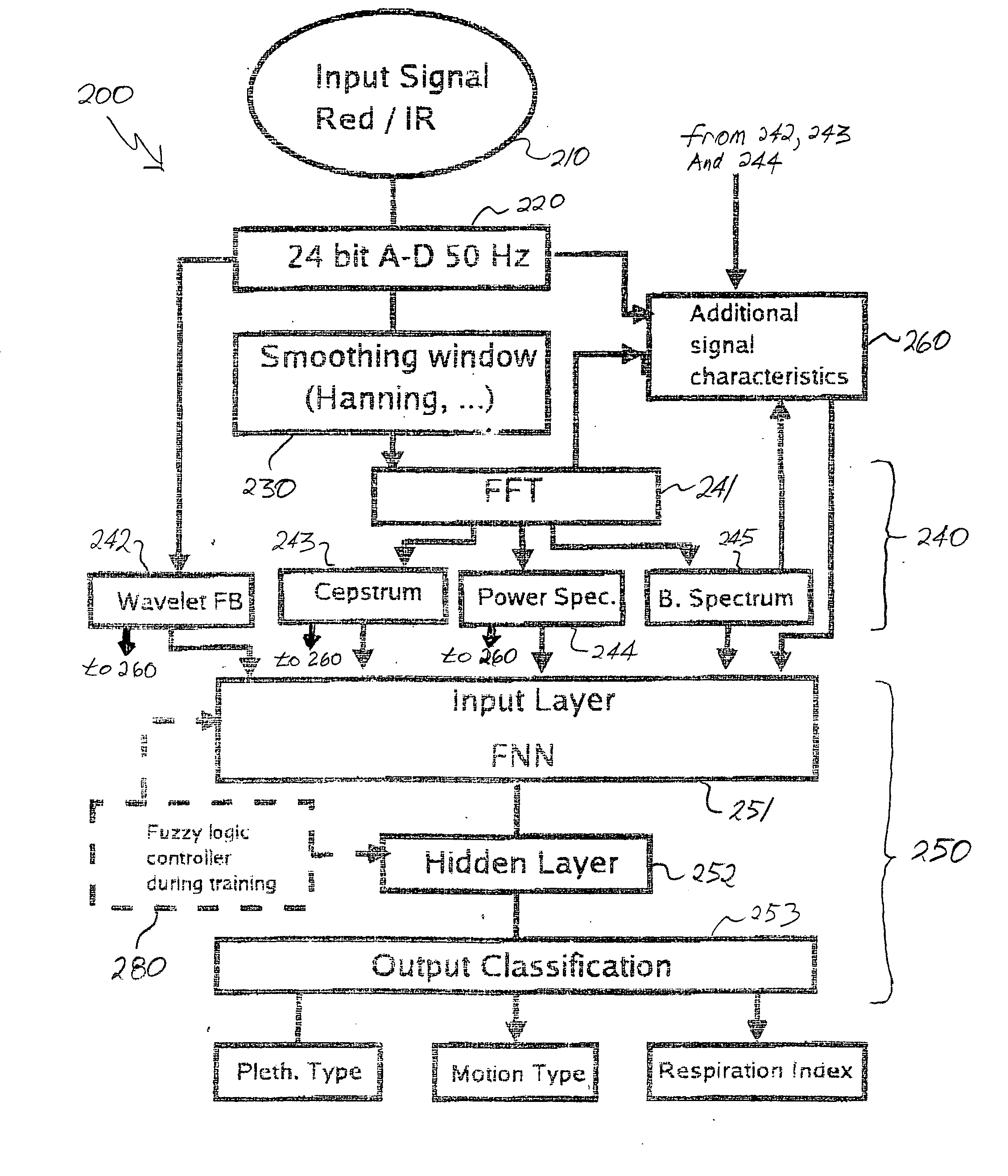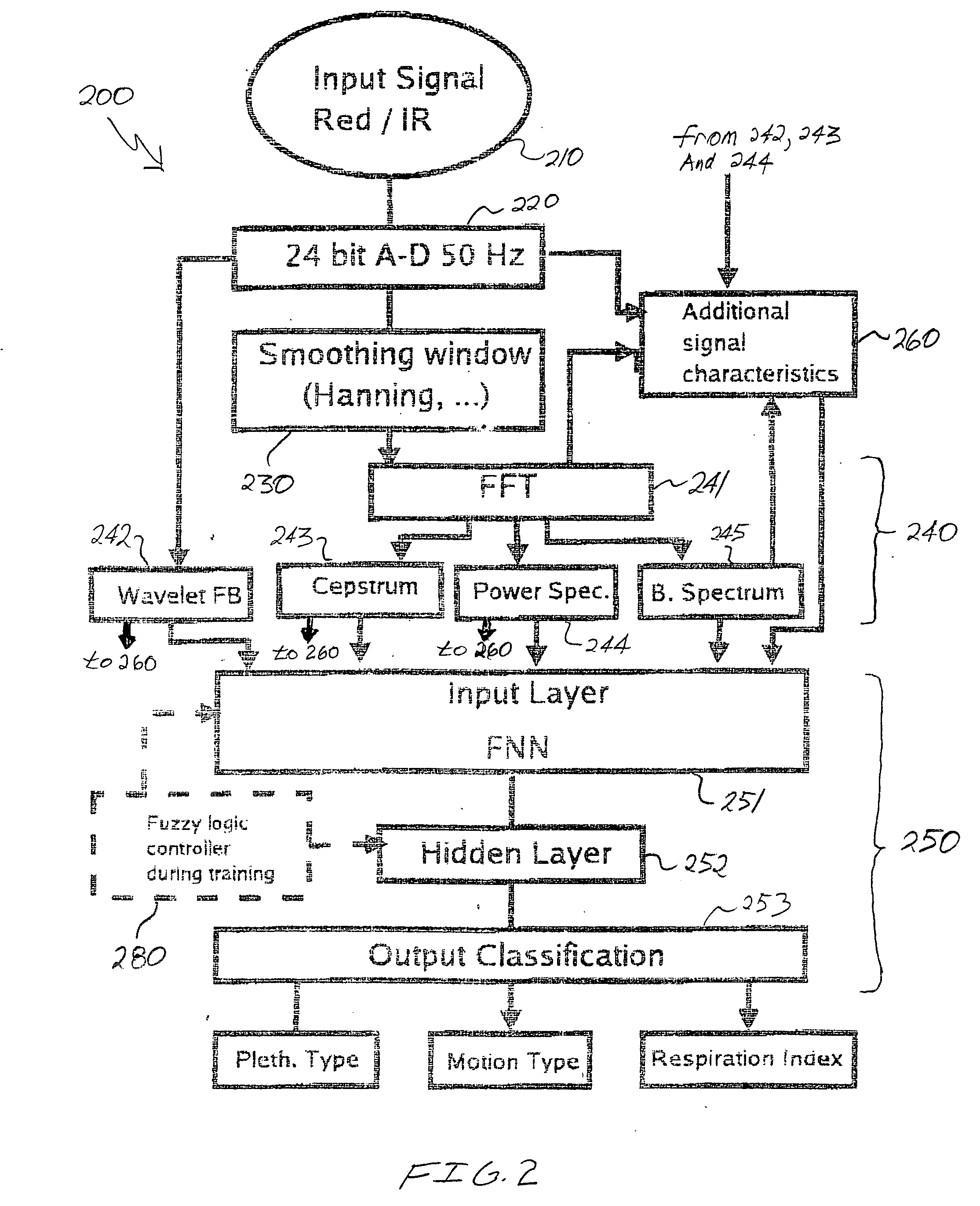Multi-domain motion estimation and plethysmographic recognition using fuzzy neural-nets
- Summary
- Abstract
- Description
- Claims
- Application Information
AI Technical Summary
Benefits of technology
Problems solved by technology
Method used
Image
Examples
Embodiment Construction
Referring now to FIG. 1, there is shown a block diagram of one embodiment of a pulse oximeter 10 in which multi-domain motion estimation and plethysmographic signal recognition using fuzzy neural-nets may be implemented. The pulse oximeter 10 is configured for use in determining the pulse rate of a patient as well as one or more blood analyte levels in the patient, such as an SPO2 level. It should be appreciated that multi-domain motion estimation and plethysmographic signal recognition using fuzzy neural-nets in accordance with the present invention may be implemented in pulse oximeters that are configured differently from the pulse oximeter depicted in FIG. 1 as well as in other environments wherein plethysmographic signals are processed in order to obtain desired information relating to patient physiological conditions from the plethysmographic signals.
The pulse oximeter 10 includes a pair of optical signal sources 20a, 20b for emitting a corresponding pair of light signals 30...
PUM
 Login to View More
Login to View More Abstract
Description
Claims
Application Information
 Login to View More
Login to View More - R&D
- Intellectual Property
- Life Sciences
- Materials
- Tech Scout
- Unparalleled Data Quality
- Higher Quality Content
- 60% Fewer Hallucinations
Browse by: Latest US Patents, China's latest patents, Technical Efficacy Thesaurus, Application Domain, Technology Topic, Popular Technical Reports.
© 2025 PatSnap. All rights reserved.Legal|Privacy policy|Modern Slavery Act Transparency Statement|Sitemap|About US| Contact US: help@patsnap.com



